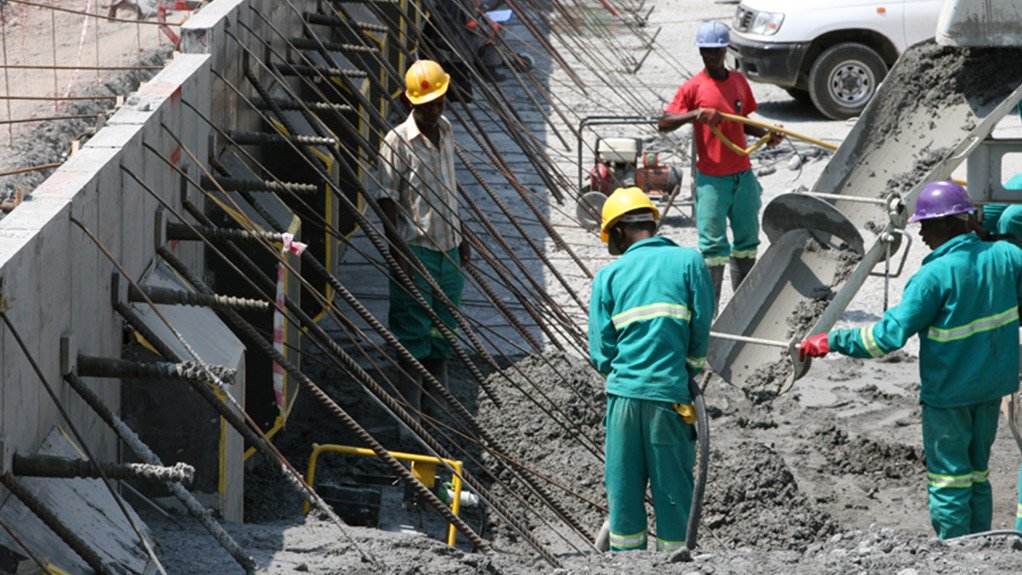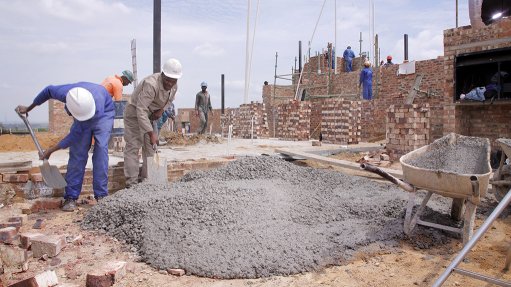Central, West Africa a hotbed of infrastructure growth, report finds
A study into infrastructure development in Africa has pointed to the emergence of Central and North Africa as megaproject hotspots, with 301 transport, energy and power, water and mining projects – denoting investment of $375.4-billion – currently under way on the continent.
Drawing from the findings of professional services firm Deloitte’s ‘Africa Construction Trends Report 2015’, Deloitte public–private partnerships (PPP) associate director Jean-Pierre Labuschagne on Thursday said the number of projects qualifying for inclusion in the 2015 survey had risen 17%, from 257 in 2014 to 301 this year.
The report looked to pinpoint the realities of mega-infrastructure project ownership, funding and construction, focusing solely on infrastructure projects valued at over $50-million that had broken ground no later than June 1, 2015.
The total value of projects under construction increased 15% year-on-year, climbing from $325-billion in 2014 to $375-billion, with 37% falling into the transport sector, 28% in energy and power, 7% in mining, 6% in oil and gas, 6% in real estate and 8% classified as ‘other’.
“Development on this scale is less present in the education, manufacturing and telecommunication sectors, which collectively account for less than 2% of total projects.
“Expected challenges in terms of water security in Africa are not reflected in the investment volumes and neither is social development being prioritised at this level of capital expenditure (capex) in infrastructure,” Labuschagne said at the launch of the report.
Around 63% of the projects tallied this year were ongoing projects that had been carried over from prior years, while 37% were newcomers, representing good prospects for the future, he asserted.
“Rapid urbanisation and the influx of an expanding middle-class continues to drive the need for infrastructural reform, expansion and upgrading, which will likely reflect in future projects coming to fruition,” the PPP specialist remarked.
STATE HOLD
Looking to ownership trends, 71%, or 214, projects were primarily government-owned, followed by private domestic owners, with 38 projects, or 13% of the overall project portfolio, and Africa development finance institutions (DFIs), which funded 3%, or nine projects.
While China only owned one project outright, Labuschagne said the Asian country’s presence on the continent remained prominent, with Chinese-based companies involved in the funding of 13 projects and “heavily present” in the construction of 42 projects – signifying 15% of the continent’s overall project portfolio.
African governments owned 71% of African infrastructure projects, were involved in the construction process of 27% of all projects and were present in the funding of 16% of these developments.
DEVELOPMENT FUNDING THRUST
Trends in the funding of mega-infrastructure projects revealed the extent of participation by DFIs, which were involved in financing around 145 of the continent’s 301 projects, representing 48% of total projects and 34% of continent-wide financing.
International DFIs funded 52 projects in the energy and power sector and 43 in the transport sector, with 40 of these positioned in West Africa, 39 in East Africa, and 37 in South Africa.
“Government is the second-highest provider of funding, followed by the amalgamation of the participation of all singular countries’ financing and then by China on a standalone basis,” he said.
REGIONAL EMERGENCE
Taking a regional perspective, the bulk of projects remained in the Southern Africa region, which hosted 109, or 36%, of all projects, followed by West Africa, with 79 projects, East Africa, with 61 projects, North Africa, with 29, and Central Africa, with 23.
“There is a bit of a slowdown in the number of projects in Southern Africa, which is a comment on what’s happening in the region in terms of slowed economic growth.
“China is far less present in this region, with involvement in only 15% of projects, while there is lots of private sector funding – far higher than that of other regions,” Labuschagne remarked.
The bulk of West African projects were within the borders of Nigeria and Ghana, with transport-related infrastructure leading the pack. DFIs funded 69% of projects in this region.
Infrastructure projects in East Africa increased from 51 in 2014 to 61 in the year under review, representing 20% of all African projects across Africa and accounting for 50% of their overall value.
“There is a continuing trend of DFI financing, while China is heavily present in the region, funding 8% of the region’s projects,” he held.
The North Africa region added 21 large-scale infrastructure projects between 2014 and 2015, with an uptick in transport-related projects, many of which were owned by firms based in the US, Italy and China.
While the Central African region accounted for only 23 projects, Labuschagne believed this area offered “huge” potential.
“Both Central and North Africa saw massive leaps in project count and related capex.
“Governments in the Central Africa region own 91% of all projects – the highest of all regions. China is most present in this region, which says something about [its] risk apetite,” he commented.
Describing infrastructure in Africa as “a regional story”, Labuschagne said the development curve would continue to face headwinds in the form of margin pressure, contractor challenges, slow project start-ups and delays, depressed commodity prices and private sector investment hesitancy.
“Africa continues to tell a positive story, but you need to do a regional analysis to understand what’s happening . . . broad brush strokes are useful, but lose the nuance.
“The number of new projects is indicative of a country’s approach to encouraging investment and infrastructure development. While things are moving, we would like to see an increase in social infrastructure, particularly water infrastructure and schools,” he concluded.
Comments
Press Office
Announcements
What's On
Subscribe to improve your user experience...
Option 1 (equivalent of R125 a month):
Receive a weekly copy of Creamer Media's Engineering News & Mining Weekly magazine
(print copy for those in South Africa and e-magazine for those outside of South Africa)
Receive daily email newsletters
Access to full search results
Access archive of magazine back copies
Access to Projects in Progress
Access to ONE Research Report of your choice in PDF format
Option 2 (equivalent of R375 a month):
All benefits from Option 1
PLUS
Access to Creamer Media's Research Channel Africa for ALL Research Reports, in PDF format, on various industrial and mining sectors
including Electricity; Water; Energy Transition; Hydrogen; Roads, Rail and Ports; Coal; Gold; Platinum; Battery Metals; etc.
Already a subscriber?
Forgotten your password?
Receive weekly copy of Creamer Media's Engineering News & Mining Weekly magazine (print copy for those in South Africa and e-magazine for those outside of South Africa)
➕
Recieve daily email newsletters
➕
Access to full search results
➕
Access archive of magazine back copies
➕
Access to Projects in Progress
➕
Access to ONE Research Report of your choice in PDF format
RESEARCH CHANNEL AFRICA
R4500 (equivalent of R375 a month)
SUBSCRIBEAll benefits from Option 1
➕
Access to Creamer Media's Research Channel Africa for ALL Research Reports on various industrial and mining sectors, in PDF format, including on:
Electricity
➕
Water
➕
Energy Transition
➕
Hydrogen
➕
Roads, Rail and Ports
➕
Coal
➕
Gold
➕
Platinum
➕
Battery Metals
➕
etc.
Receive all benefits from Option 1 or Option 2 delivered to numerous people at your company
➕
Multiple User names and Passwords for simultaneous log-ins
➕
Intranet integration access to all in your organisation





















